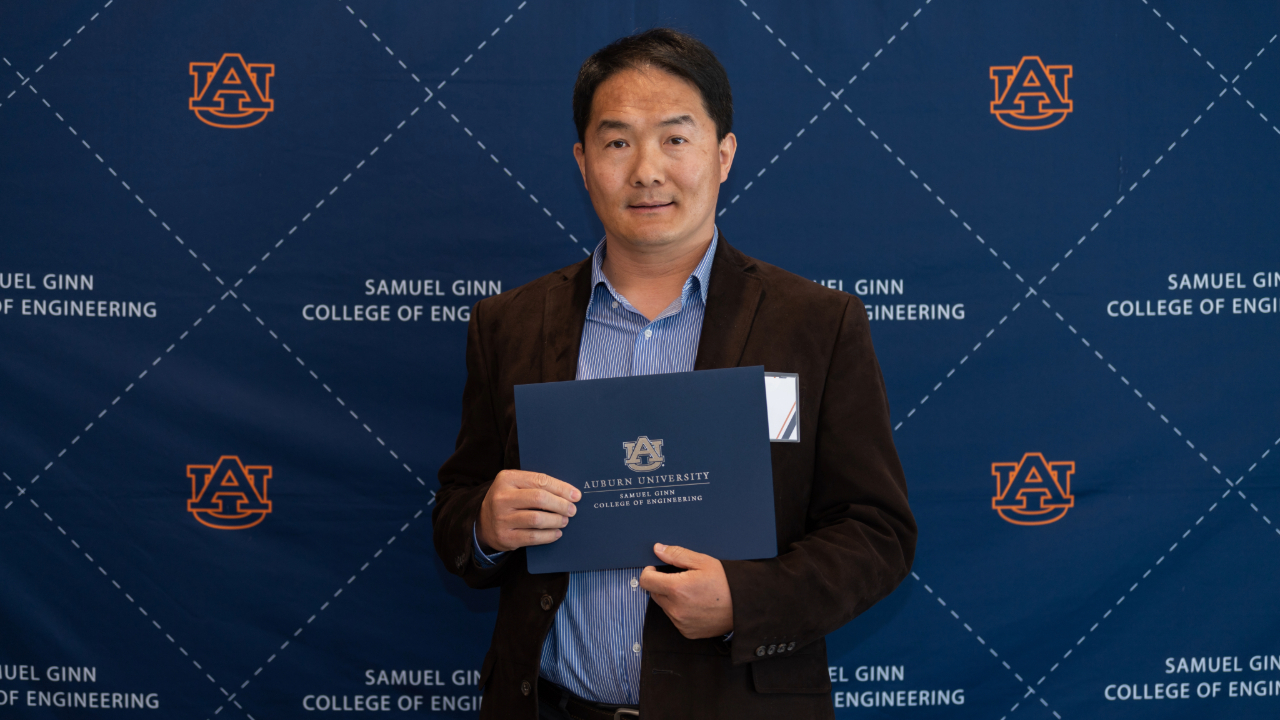Professor in chemical engineering part of Phase I NSF Convergence Accelerator grant to develop portable opioid biosensors
Published: Feb 13, 2024 11:10 AM
By Joe McAdory
Opioids — pain-relieving medications such as fentanyl, hydrocodone, oxycodone — accounted for nearly 83,000 overdose deaths in the United States in 2022, according to the Centers for Disease Control and Prevention.
Xinyu Zhang, Alumni Professor of Chemical Engineering, and a team of researchers, are developing innovative, cost-effective and portable opioid biosensors utilized by patients, medical professionals and law enforcement, capable of providing immediate and accurate opioid detection and monitoring.
Their project, “An Integrated and Miniaturized Opioid Sensor System: Advancing Evidence-Based Strategies for Addressing the Opioid Crisis,” was awarded a one-year, $649,585 U.S. National Science Foundation (NSF) Convergence Accelerator Phase 1 grant aligned to the program's Track L: Real-World Chemical Sensing Applications.
Zhang, the project’s principal investigator (PI), is joined by co-PIs Ruth Waddell Smith, director of the forensic science program at Michigan State University, Zhe Wang, assistant professor of chemistry at Oakland (Michigan) University, Jingshu Chen, assistant professor of electrical and computer engineering at Oakland (Michigan) University, and Mark Ming-Cheng Cheng, professor of electrical and computer engineering at the University of Alabama.
The inter-Molecular Interaction-enabled Detective Recognition (iM-Dr) opioid biosensor features high sensitivity, selectivity and versatility. Zhang said that various forms of iM-Dr biosensors will be developed for diverse applications, including law enforcement, environmental testing and medical monitoring.
“Our desired outcome is to deliver real-world solutions to combat this epidemic,” Zhang said. “Society has a very big problem with opioids, specifically fentanyl. We're seeing larger cities across the nation growing with more issues, even right here in Alabama. Opioid drug is a very serious situation. Much of the state has limited resources and need inexpensive devices that are approachable and accessible by those who use them.”
Zhang said the iM-Dr — capable of pairing with cell phones – is prime for large-scale fabrication using cost-effective materials, which create a cost-effective biosensor for clientele.
“We're trying to find the most practical end users for the device,” Zhang said. “We believe those people include first responders, such as doctors and law enforcement officers. For example, police often handle unknown samples when they're searching a vehicle’s trunk. Also, many doctors have patients visit to draw blood for tests, then come back to the hospital, or clinical office, on a weekly or monthly basis. But a very high dose of these drugs can bring about a very dangerous situation in seconds or minutes. People can't afford to wait for a week or a month to know this. Our real-time and portable device can prevent deadly risk situations.”
The project is designed to create a paradigm shift in opioid crisis management, offering tangible solutions that can reduce opioid misuse, enhance public safety, and inform effective policymaking, Zhang said.
“It is our responsibility, as researchers, to make a positive impact,” Zhang said. “Hopefully, the creation and implementation of these biosensors will result in a significant reduction in opioid-related incidents and deaths, an increase in public awareness, and an enhanced framework for research and policy development addressing the opioid crisis.”
Media Contact: , jem0040@auburn.edu, 334.844.3447
Xinyu Zhang said project is designed to create a paradigm shift in opioid crisis management, offering tangible solutions that can reduce opioid misuse, enhance public safety, and inform effective policymaking.


